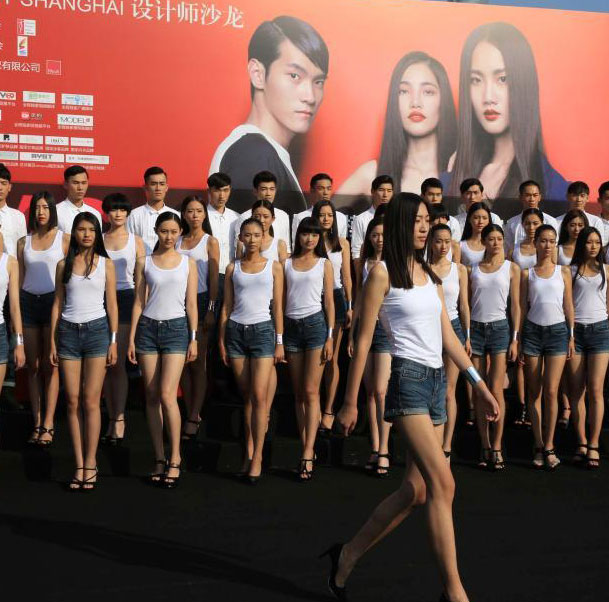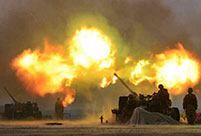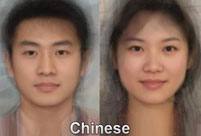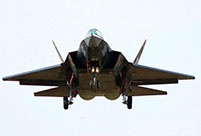 Top 100 beauties in the world!
Top 100 beauties in the world!
 Gallery: Who is the most beautiful one?
Gallery: Who is the most beautiful one?
 If you like autumn, put your hands in the air!
If you like autumn, put your hands in the air!
 Fan Bingbing's "Queen style" in new play
Fan Bingbing's "Queen style" in new play
 Lingerie show at 2014 Miss China
Lingerie show at 2014 Miss China
 J-10 fighters show aerobatic stunts in smog-free sky
J-10 fighters show aerobatic stunts in smog-free sky
 Charming contestants of Shanghai Int’l Model Contest
Charming contestants of Shanghai Int’l Model Contest
 Most amazing chi-pao beauties
Most amazing chi-pao beauties
 7 deadly animal attacks
Russia to launch 70 Proton rockets by 2020: official
7 deadly animal attacks
Russia to launch 70 Proton rockets by 2020: officialBEIJING, Nov. 9 -- As Asia-Pacific leaders gather here in the coming days for the annual summit under this region's premier economic cooperation framework, hopes are running high that they will inject fresh vigor into regional economic integration.
Particularly, all eyes are on the Free Trade Area of the Asia-Pacific (FTAAP), an all-encompassing free trade vision for which the 21-member Asia-Pacific Economic Conference (APEC) forum is expected to hatch out a roadmap.
It is undeniable that to craft a free trade zone out of a region as vast and diverse as the Asia-Pacific is extremely cumbersome and time-consuming, yet the current trend of fragmentation and incoordination has turned the region's trading system into a spaghetti bowl.
The recent decade has witnessed a mushrooming of small and medium-sized FTAs in the Asia-Pacific. From the Trans-Pacific Partnership (TPP) to the Regional Comprehensive Economic Partnership (RCEP), it is evident that Asia-Pacific economies are truly eager to open up to each other for the sake of mutual benefit and common development.
However, due to a lack of information-sharing and transparency, such a multitude of varying and overlapping free trade mechanisms might eventually generate a myriad of complex or even contradictory rules governing regional trade, thus creating even larger barriers for traders and investors.
Thus it is high time that serious attention was paid to the FTAAP idea, which has been around for almost a decade. The overarching arrangement is intended to be open, inclusive and flexible, so as to accommodate all economies in the region and bridge trade deals both in being and in the making.
A high-quality FTAAP, studies show, could increase the size of global economy by a whopping 2.4 trillion U.S. dollars by 2025.
As such a grand vision draws closer to reality, it is only natural for suspicions and noises to kick in. Some Western media have rushed to hype up a "China-U.S.rivalry" for leadership in the region's mounting free trade drive.
Allegations of this sort are groundless and betray their advocates' obsession with confrontation or sensation.
The FTAAP is by no means a "solo show" of China. Rather, it is the shared aspiration of all APEC members that will bring them a wealth of benefits.
In addition, the FTAAP is not aimed at forcing out other free trade arrangements in the region, but at integrating them and making regional movement of goods and services more efficient.
With the world economy defined by globalization and Asia-Pacific economies subjected to mounting interdependence, the time is now ripe to treat the dynamic region as a whole.
 World Pole Dance Championship in China
World Pole Dance Championship in China In pics: PLA stages live-fire drill in NE China
In pics: PLA stages live-fire drill in NE China  59-year-old Liu Xiaoqing still looks stunning
59-year-old Liu Xiaoqing still looks stunning  Standard faces for each countries in the world
Standard faces for each countries in the world Shocking! Photos of Chinese fighters revealed
Shocking! Photos of Chinese fighters revealed Images of angels in white: At work v.s off work
Images of angels in white: At work v.s off work  Post-85s female pilots and their mission
Post-85s female pilots and their mission Netizens fall in love with champion swimmer Ning Zetao
Netizens fall in love with champion swimmer Ning Zetao Vibrant 21-year-old and her own Cheongsam brand
Vibrant 21-year-old and her own Cheongsam brand Top 10 most dangerous jobs in the world
Top 10 most dangerous jobs in the world  Top 10 fifth generation jet fighters in the world
Top 10 fifth generation jet fighters in the world Top 10 Chinese goddesses
Top 10 Chinese goddesses  Top 20 hottest women in the world in 2014
Top 20 hottest women in the world in 2014 Top 10 pure beauties in showbiz
Top 10 pure beauties in showbiz  Top 10 world's highest-paid models 2014
Top 10 world's highest-paid models 2014 The most gorgeous Chinese women
The most gorgeous Chinese women Top 10 most handsome faces in Asia
Top 10 most handsome faces in AsiaDay|Week|Month